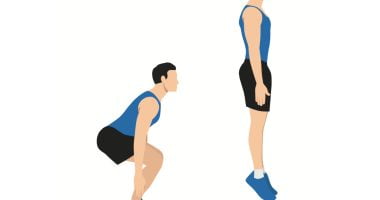
Testing people twice for the coronavirus, with a nasal swab followed by an antibody finger prick test, would catch most of those people who fail to get the right Covid-19 diagnosis, researchers believe.
Nose and throat swabs miss around 30% to 50% of infections, say the University of Cambridge team, as the virus can disappear from the upper respiratory tract into the lungs. But they say adding an antibody test can plug that gap. Antibodies show up from about six days after infection.
A team at Addenbrooke’s hospital in Cambridge has piloted the use of combined tests for patients arriving at the hospital. Many arrive with flu-like symptoms and need an accurate diagnosis to ensure they are put on the right wards, so that there is no risk of Covid-19 patients infecting others.
Ravi Gupta, professor of clinical microbiology at the Cambridge Institute of Therapeutic Immunology and Infectious Disease, said: “We still do not have a gold standard test for diagnosing Covid-19. This poses a challenge to healthcare workers, who need to make quick and safe decisions about how and where to treat patients.
“The two main types of test – PCR and antibody tests – both have limitations because of the nature of coronavirus infection and how our body responds. But we’ve shown that if you combine them and carry out both at point of care, their reliability can be hugely increased.”
The team used rapid point of care diagnostic tests called Samba II that can detect fragments of the virus in an average of 2.6 hours. The nucleic acid tests were developed by Cambridge spin-off company Diagnostics for the Real World, using technology originally developed for on-the-spot HIV tests in Africa.
They combined these with two finger-prick antibody tests, both of which test for antibodies against the spike protein on the surface of the Sars-CoV-2 virus.
In the pilot study, 45 patients were tested on arrival at the hospital. The nucleic acid tests alone could identify eight out of 10 patients with Covid-19, the researchers found. Combined with the rapid antibody tests, 100% of the coronavirus patients were correctly identified.
Among the 21 patients who did not have Covid-19, there were four false positive results with one antibody test and only one false positive with the second antibody test, demonstrating that one performed better than the other.
“Combining point-of-care PCR and antibody testing could be a game changer for rapidly identifying those patients with moderate to severe Covid-19 infection,” said Gupta. “This could prove extremely useful, particularly in the event of a second wave arising during flu season, when it will not be immediately clear whether the patients have Covid-19 or seasonal flu.”
The research was mainly funded by the Wellcome Trust, and supported by the National Institute of Health Research Cambridge Biomedical Research Centre and the Cambridge Clinical Trials Unit.
The Guardian







